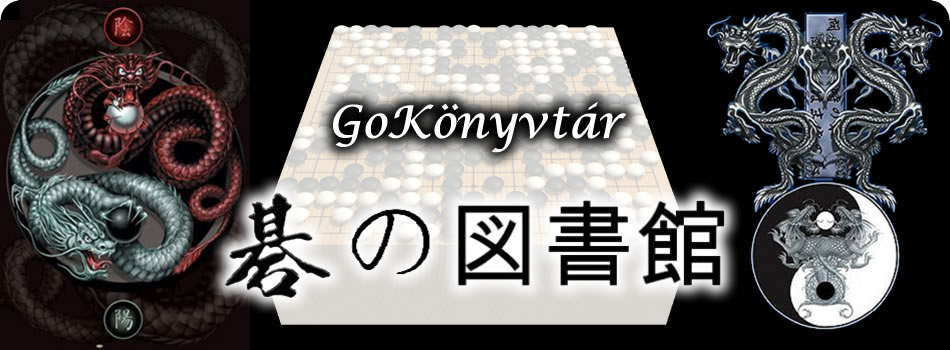 |
|
| |
| A könyvtár helye: |
Excelsior Klub, Budapest, 1114 Bartók Béla út 19. Pinceklub, bejárat a Mészöly u. felol |
| "Nyitvatartási idő": |
E-mail-en keresztül történő előzetes egyeztetés alapján |
| E-mail cím: |
Amennyiben könyvet szeretnél kölcsönözni, nincs más dolgod, mint írnod az alábbi címre: gokonyvtar@freemail.hu |
| Kölcsönzési idő: |
3 hét, ha más nem jegyezte elő, egyszer hosszabítható |
| Letéti díj: |
5000 Ft/eredeti könyv, 3000 Ft/fénymásolt könyv, 1500 Ft/újság,kiadvány |
| A kölcsönzés feltétele: |
Tagság valamelyik magyarországi go egyesületben; kezdo, érdeklődőknél nincs ez a megkötés |
| Pótdíj: |
200 Ft/hét/könyv |
| Könyv elvesztésekor: |
A könyv értékének a duplája fizetendo vagy ha az illeto beszerzi a könyvet, akkor csak késedelmi díjat kell fizetni |
| Könyvtáros(ok): |
Zeller Gábor |
Sajnos az évek során sok könyvünknek nyomaveszett, ezért vannak a szigorú szankciók. Kérjük megértésetek!
A nagyon kezdő, szabályismertetos gókönyvek kölcsönzésénél eltekintünk az egyesületi tagságtól.
Az MGE vezetosége kér mindenkit, akinél vannak könyvtari könyvek vagy folyóiratok még régebbrol, hogy hozza be az Excelsiorba.
Akinél régebbrol "ottfelejtődött" néhány könyvtári könyv, minden szankció nélkül visszahozhatja, akár névtelenül is (pl. tegye be a készletek mellé a klubban).
Néhány embernél vannak folyóiratok is, amiket az Egyesület kapott az évek során, azokat is hozzátok be a klubba!
|
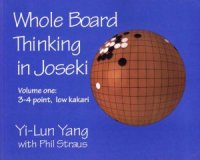 |
Whole Board Thinking in Joseki volume 1. |
These books are designed to teach you how to choose your joseki with the whole board in mind. They consist entirely of problems; the problems are in groups such that there is one corner that is exactly the same in each problem in the group, while the other corners are different; you have to figure out how to play in that corner, keeping the rest of the board in mind.
|
Példányszám |
Hozzáférhető |
Visszahozatal dátuma |
Kölcsönző |
2 |
2 |
- |
- |
|
|
|
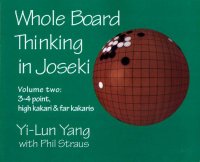 |
Whole Board Thinking in Joseki volume 2. |
These books are designed to teach you how to choose your joseki with the whole board in mind. They consist entirely of problems; the problems are in groups such that there is one corner that is exactly the same in each problem in the group, while the other corners are different; you have to figure out how to play in that corner, keeping the rest of the board in mind.
|
Példányszám |
Hozzáférhető |
Visszahozatal dátuma |
Kölcsönző |
2 |
2 |
- |
- |
|
|
|
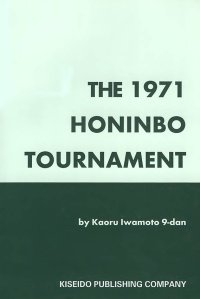 |
The 1971 Honinbo Tournament |
In November 1970, an unhearalded 21-year-old 7-dan won his way into the Honinbo league. There, over the next 6 months, he beat some of the world's strongest players to earn the right to challenge Rin Kaiho for the Honinbo title. At that time, Rin was the undisputed king of the go world.
He had stripped the great Sakata Eio of his Meijin and Honinbo titles, and rebuffed him in his challenges to get them back. Rin was being billed as Go Seigen's successor and no one gave Ishida Yoshio much of a chance.
But Ishida was one of a new breed of players from that hot-house of go prodigies known as the Kitani Dojo. He was almost invincible and rarely lost a game -- he had run up a string of 30 straight victories in the Oteai; he was a calm player under pressure; he possessed superb positional judgment; and his endgame calculation was so accurate that he earned the nickname `the computer'. Rin was also noted for these same abilities, but Ishida was a level higher. |
Példányszám |
Hozzáférhető |
Visszahozatal dátuma |
Kölcsönző |
1 |
1 |
- |
- |
|
|
|
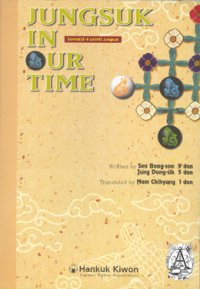 |
Jungsuk In Our Time |
Korea is waking up!
The Korean Baduk Association has published its first Go book in English. Jungsuk is Korean for Joseki. This book is a dictionary of modern 3-4 joseki. It is an attractive looking book. Interestingly, the badug terms we use the japanese terms like joseki, sente and atari are not translated!
This book reflects the Korean-Japanese rivalry in Badug-Go.
Junsuk in our time overlaps with Ishida vol 1, the main lines are the same, but you will find variations in one book not listed in the other.
In the book you will find an index in diagram form, and a glossary explaining the 12 korean words used. In total 350 pages. |
Példányszám |
Hozzáférhető |
Visszahozatal dátuma |
Kölcsönző |
1 |
1 |
- |
- |
|
|
|
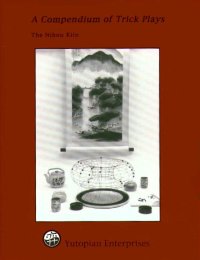 |
The Compendium Of Trick Plays |
This book has chapters on Essential Knowledge of Trick Plays, by Ishida Yoshio, on The Larger Strategy of Trick Plays, by Kageyama Toshiro, on Introducing Trick Plays, by Mihori Sho, and on Caution! Trick Play Ahead!, by Maeda Nobuaki.
The first chapter is a compilation of famous trick plays, the second chapter has trick plays that don't hurt you even if your opponent doesn't fall for them, the third chapter is perhaps somewhat more theoretical, and the fourth chapter contains problems. |
Példányszám |
Hozzáférhető |
Visszahozatal dátuma |
Kölcsönző |
1 |
1 |
- |
- |
|
|
|
 |
Appreciating Famous Games |
This is a collection of ten games from the classical era. The collection is targeted at people from 9 kyu to 4 kyu, so it's designed to be the first game collection that you read, and I think that it does that job well.
The commentaries average out to 28 pages/game, and none of them is shorter than 20 pages, so they spend a lot of time explaining stuff. There's a bit of historical commentary as well, which is nice. |
Példányszám |
Hozzáférhető |
Visszahozatal dátuma |
Kölcsönző |
1 |
1 |
- |
- |
|
|
|
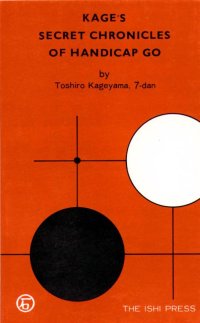 |
Secret Chronicles Of Handicap Go |
This book contains nine handicap games, ranging from two to five stones. Most of the games are pro-pro. At key spots in each games, they give you three possible next moves to choose from.
If you've read Kageyama's Lessons in the Fundamentals of Go, you'll recognize the chatty style; this one also includes lots of talking between the two players. There's no general theory presented in the book, just the games. |
Példányszám |
Hozzáférhető |
Visszahozatal dátuma |
Kölcsönző |
2 |
2 |
- |
- |
|
|
|
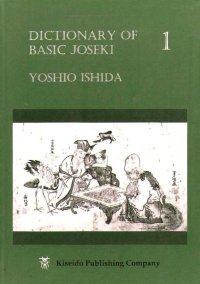 |
Dictionary Of basic Joseky 1. |
The only comprehensive reference for joseki in English. It doesn't include all of the latest variations (it's 20 years old), and it's not encyclopedic, but what's here is more than enough for everybody but the strongest of players. And it should be a part of everybody's go reference library, at least once you reach a certain level.
The first volume was out of print but has just been reprinted by Kiseido. Also, I see comments fairly frequently by strong players on rec.games.go that these books are woefully out of date, so that could be a problem if you're a very strong amateur who plays people who know the latest variations. |
Példányszám |
Hozzáférhető |
Visszahozatal dátuma |
Kölcsönző |
1 |
1 |
- |
- |
|
|
|
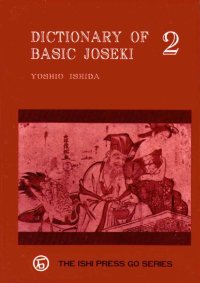 |
Dictionary Of basic Joseky 2. |
The only comprehensive reference for joseki in English. It doesn't include all of the latest variations (it's 20 years old), and it's not encyclopedic, but what's here is more than enough for everybody but the strongest of players. And it should be a part of everybody's go reference library, at least once you reach a certain level.
The first volume was out of print but has just been reprinted by Kiseido. Also, I see comments fairly frequently by strong players on rec.games.go that these books are woefully out of date, so that could be a problem if you're a very strong amateur who plays people who know the latest variations. |
Példányszám |
Hozzáférhető |
Visszahozatal dátuma |
Kölcsönző |
1 |
1 |
- |
- |
|
|
|
 |
Dictionary Of basic Joseky 3. |
The only comprehensive reference for joseki in English. It doesn't include all of the latest variations (it's 20 years old), and it's not encyclopedic, but what's here is more than enough for everybody but the strongest of players. And it should be a part of everybody's go reference library, at least once you reach a certain level.
The first volume was out of print but has just been reprinted by Kiseido. Also, I see comments fairly frequently by strong players on rec.games.go that these books are woefully out of date, so that could be a problem if you're a very strong amateur who plays people who know the latest variations. |
Példányszám |
Hozzáférhető |
Visszahozatal dátuma |
Kölcsönző |
1 |
1 |
- |
- |
|
|
|
 |
Go Proverbs |
This is a brief (62 page) book of proverbs. It has 9 proverbs on life and death and 13 proverbs on shape and strategy. It was originally published by The Go Press in 1980; the Slate & Shell reprint is unchanged. |
Példányszám |
Hozzáférhető |
Visszahozatal dátuma |
Kölcsönző |
4 |
4 |
- |
- |
|
|
|
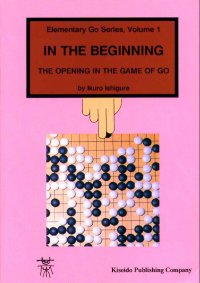 |
Elementary: In the Beginning (1) |
The first thing that you should know about this book is that it's not a general introduction to go, so if you're looking for that, don't buy this. The word beginning in the title refers to the fact that this is, rather, a book about the opening.
The first chapter introduces the basic kinds of moves played during the opening (e.g. what it means to play on the 3-4 point or the 3-3 point, extensions, pincers, invasions, etc.) The second chapter is about higher-level concepts like thickness. The third chapter consists of ten problems.
|
Példányszám |
Hozzáférhető |
Visszahozatal dátuma |
Kölcsönző |
1 |
1 |
- |
- |
|
|
|
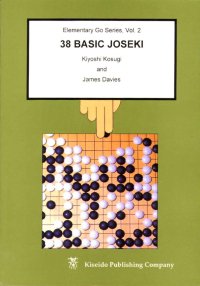 |
Elementary: 38 Basic Joseki (2) |
This book introduces 38 of the most common joseki.
It presents some of the major variants of each of them with a fair amount of discussion, much more so than, for example, Ishida's dictionary.
The discussion talks about reasons why you might play a certain variant, reasons for certain moves, or what happens next. |
Példányszám |
Hozzáférhető |
Visszahozatal dátuma |
Kölcsönző |
1 |
1 |
- |
- |
|
|
|
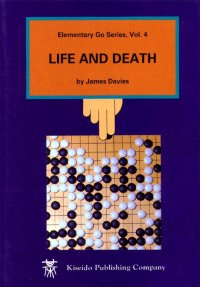 |
Elementary: Life and Death (3) |
This is a book teaching you how to play in life-and-death situations. Each chapter presents a kind of shape that is on the border between being alive and dead, and tells you when it's alive, when it's dead, and when that depends on who plays next.
The chapters all have problems testing you on the shapes in the chapter or presenting closely related shapes. |
Példányszám |
Hozzáférhető |
Visszahozatal dátuma |
Kölcsönző |
1 |
1 |
- |
- |
|
|
|
 |
Elementary: Attack and Defence (4) |
This book is an introduction to the middle game.
Its chapters are on Territory and Pawer, Attacking Strategy, Attacking Moves, Defense, Forcing Moves, Inducing Moves, Reducing and Invading Large Frameworks, Invasions into Three-Space Extensions, Ko Fights, and Problems. So it gives an introduction to all of the things that you should think about in the middle game. |
Példányszám |
Hozzáférhető |
Visszahozatal dátuma |
Kölcsönző |
1 |
1 |
- |
- |
|
|
|
 |
The Magic of GO |
| |
Példányszám |
Hozzáférhető |
Visszahozatal dátuma |
Kölcsönző |
1 |
1 |
- |
- |
|
|
|
 |
Get Strong at Joseki 1 |
These volumes consist of joseki problems.
Each volume starts of by presenting one or two basic variations of about 10 different joseki; the volumes then each have about 175 problems about those joseki. The problems are designed to show you other variations in the joseki or why certain moves aren't joseki. Each page has three problems on it, and long variations are broken up across multiple pages so that, for example, the middle problems on four consecutive pages might present successive stages in the same problem.
It seems like a well-designed series of books, and studying joseki by reading these books will doubtless help you much more than trying to memorize joseki.
Volume 1 covers the 3-4 point; Volume 2 covers the 5-3 and 5-4 points; Volume 3 covers the 4-4 and 3-3 points. Volumes 2 and 3 were written with Furuyama Kazunari.
|
Példányszám |
Hozzáférhető |
Visszahozatal dátuma |
Kölcsönző |
1 |
1 |
- |
- |
|
|
|
 |
Get Strong at Joseki 2 |
These volumes consist of joseki problems.
Each volume starts of by presenting one or two basic variations of about 10 different joseki; the volumes then each have about 175 problems about those joseki. The problems are designed to show you other variations in the joseki or why certain moves aren't joseki. Each page has three problems on it, and long variations are broken up across multiple pages so that, for example, the middle problems on four consecutive pages might present successive stages in the same problem.
It seems like a well-designed series of books, and studying joseki by reading these books will doubtless help you much more than trying to memorize joseki.
Volume 1 covers the 3-4 point; Volume 2 covers the 5-3 and 5-4 points; Volume 3 covers the 4-4 and 3-3 points. Volumes 2 and 3 were written with Furuyama Kazunari.
|
Példányszám |
Hozzáférhető |
Visszahozatal dátuma |
Kölcsönző |
1 |
1 |
- |
- |
|
|
|
 |
Get Strong at Joseki 3 |
These volumes consist of joseki problems.
Each volume starts of by presenting one or two basic variations of about 10 different joseki; the volumes then each have about 175 problems about those joseki. The problems are designed to show you other variations in the joseki or why certain moves aren't joseki. Each page has three problems on it, and long variations are broken up across multiple pages so that, for example, the middle problems on four consecutive pages might present successive stages in the same problem.
It seems like a well-designed series of books, and studying joseki by reading these books will doubtless help you much more than trying to memorize joseki.
Volume 1 covers the 3-4 point; Volume 2 covers the 5-3 and 5-4 points; Volume 3 covers the 4-4 and 3-3 points. Volumes 2 and 3 were written with Furuyama Kazunari.
|
Példányszám |
Hozzáférhető |
Visszahozatal dátuma |
Kölcsönző |
1 |
1 |
- |
- |
|
|
|
 |
Get Strong at Tesuji |
This book consists of 524 tesuji problems taken from Tesuji Kyoka Sho, by the Nihon Kiin. They're divided into four levels of difficulty (25-10 kyu, 10-5 kyu, 5-1 kyu, and dan-level); however, the problems in the fourth level only show up in the last hundred problems, and there are only about 10 of them even there, so essentially all of the problems in the book are kyu-level.
|
Példányszám |
Hozzáférhető |
Visszahozatal dátuma |
Kölcsönző |
1 |
1 |
- |
- |
|
|
|
|
|
|
 |
|